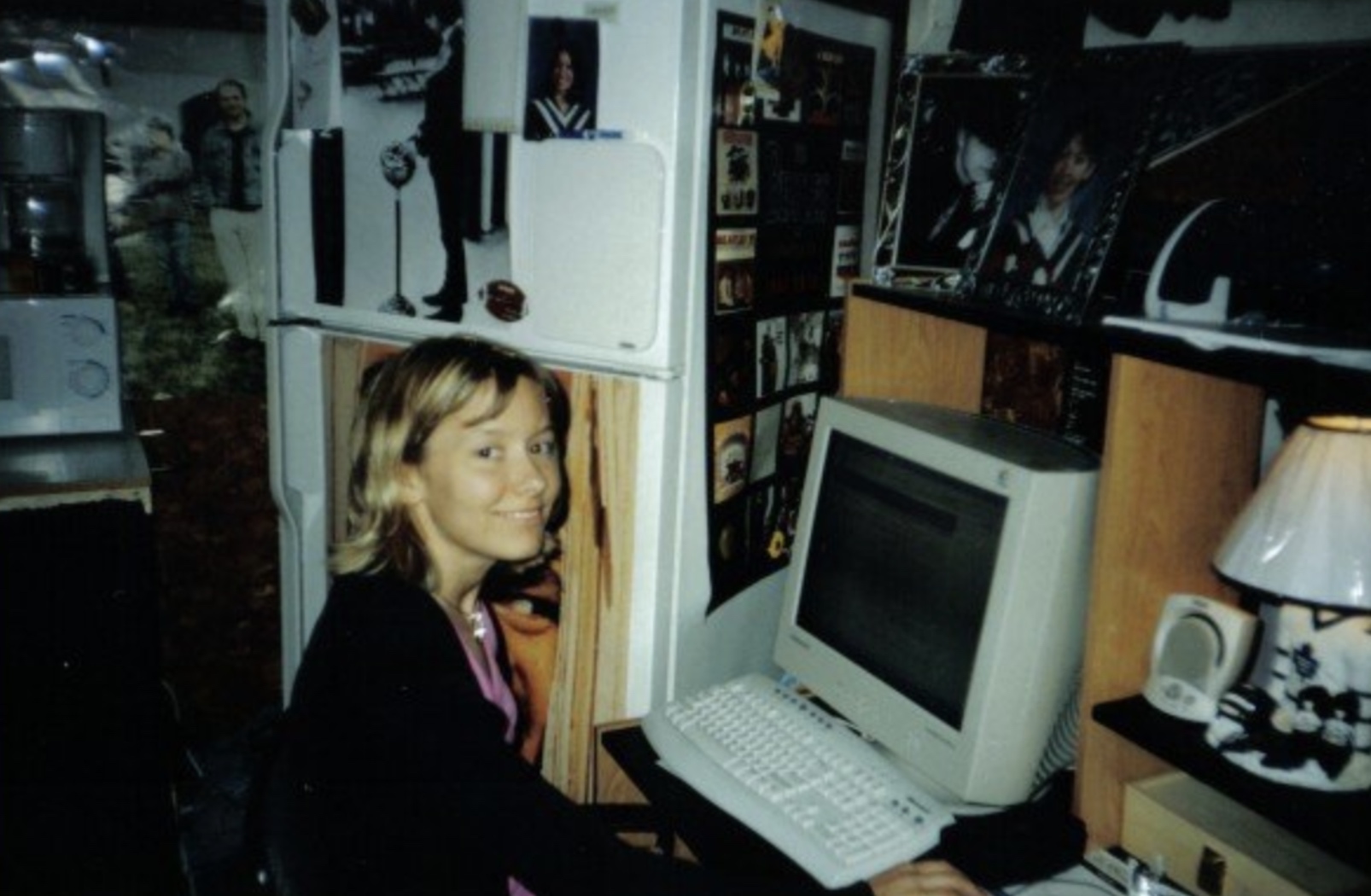
Articles
How To Make Your Remote Team Work
August 5, 2020

Remote work is having its moment! And whether your team was distributed before all this or had to shift to meet the times, technology makes managing a remote team easier than ever!
But that's not to say working from home is without its challenges.
In her episode of Process Makes Perfect, Fellow’s Director of Marketing, Erin Blaskie, walks us through her hacks for making remote teams work. (She's been using these hacks since launching her first venture in 2004 - you can see her first WFH office setup above.)
Plus, why we should all be using more of our newfound free time to work on our personal brands.
Build the ultimate WFH tech stack
Transitioning to remote work (especially unexpectedly) has enough challenges - and your tech stack shouldn't be another one. In fact, it should be making your life easier!
So, what exactly do you need in your WFH tech stack? Tools that drive productivity, communication, and consistency, including:
- Internal communication tools (like Slack)
- Video conferencing tools (like Zoom)
- Meeting management tools (like Fellow)
- Project management tools (like Asana)
- Knowledge management tools (like Trainual)
Make a schedule and stick to it
When working from home, work and home can bleed together if you're not intentional. And this can negatively affect your performance and your relationships.
Erin suggests setting a flexible work schedule - and sticking to it as much as possible. Keeping your office hours is the easiest way to do this while remote. But if you have kids or a partner sharing the space, it might be better to designate time blocks according to when there will be the least amount of distractions.
Set boundaries for your remote team
Even with a strict schedule, nailing down distributed collaboration takes some trial and error. And while eliminating the commute frees up time, it doesn't necessarily need to be reinvested into your work.
It's important to know when you should step away and unplug for the day. Consider this, you wouldn't be on call 24/7 at the office. So, why should you be "on" all the time while remote?
Create clear boundaries - like no pings after 7 pm or no calls on the weekends. (And encourage others to do the same.) This will preserve your productivity and lower the risk of burnout for yourself and among your staff.
Create an at-home workspace
Access to a home office is great! But it's definitely not a need for remote work. But you do need somewhere to work. (Some of the best American business success stories like ZipRecruiter say they were launched from kitchen tables... or so the legends go.)
Find a corner of your house that you typically don't hang out in and make that your designated "office space." Ideally, this should be one where you can minimize distractions for whatever your job entails.
Hot Tip: If you have a super small space, like an apartment, put your work stuff fully away in a backpack or the closet when you're done working for the day. This will get rid of the temptations to hop back on.
Embrace over-communication
If there is one fool-proof rule for making a distributed team run smoothly, it’s communication, communication, communication.
Without a constant stream of communication, distributed employees, team members, or even entire companies can start to feel disconnected and disengaged. Over-communication ensures that you can always find someone and that no one feels siloed off on their own.
We like to do daily team syncs to kick off the day. That way, everyone understands what’s going on and how their work is contributing.
But here is the catch - you want to over-communicate without micromanaging.
Shift your focus to content
Everyone has more time on their hands. So, why not focus on creating great content and building your community?
While it might come across as tone-deaf to do a hard-sell right now, nothing is stopping you from creating a backlog of content or exploring a new channel.
Keep your regular content cadence. But invest your extra time in writing, launching a new social media channel, or updating your brand guide.
And don't worry about it being perfect! Just get the first draft out of the way, and you can polish it up when it's time to go live.
Pro Tip: If you're feeling stuck, revisit your old content, and figure out new channels you can share it on. For example, transcribe a podcast episode into a blog or share quotes from it on social.
Double down on your personal brand
When you're ready to move onto your next position, your personal brand is the only thing you can take with you. And often, it's the spark that leads to those new opportunities.
So why wouldn't you invest more in that - especially now that you have extra time?
As cliché as this sounds, right now is the best time to invest in you and your personal brand. That might mean learning a new skill, starting new conversations, or even just cleaning up your social media pages. But whatever you choose to do, make sure it showcases your talent and your experiences.
And remember: these are not normal times, so don’t be afraid to do things you wouldn’t normally do and see what happens.
Similar Blog Posts












